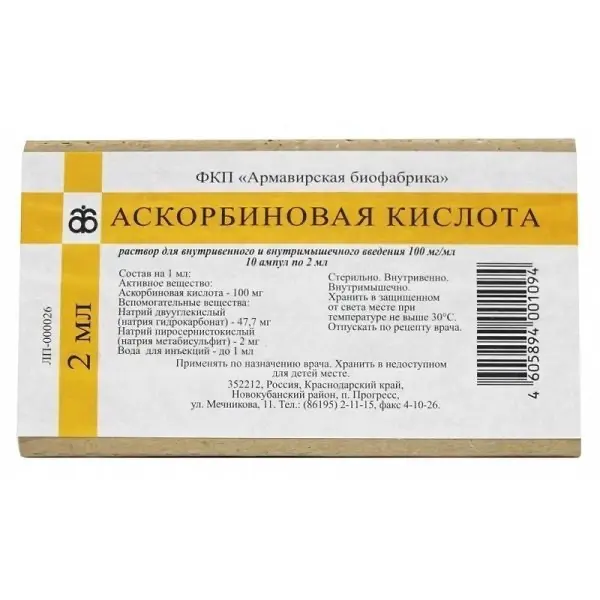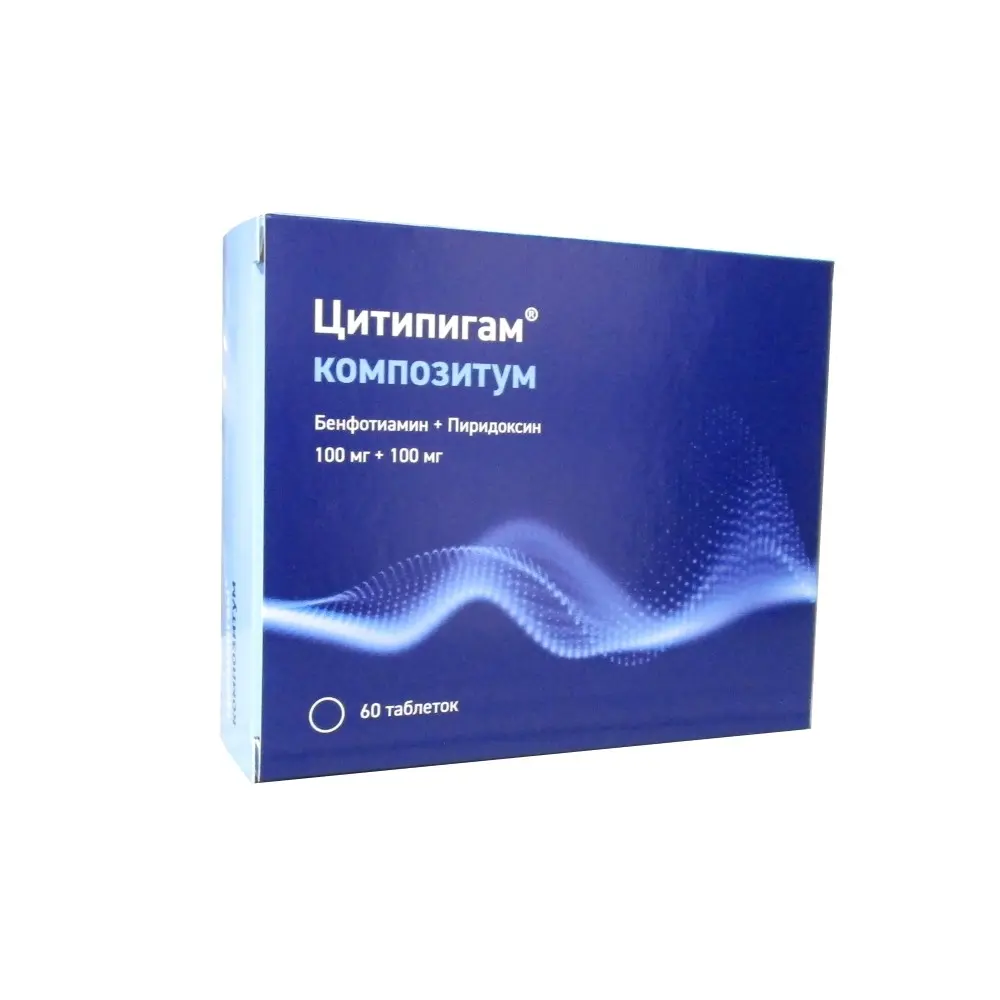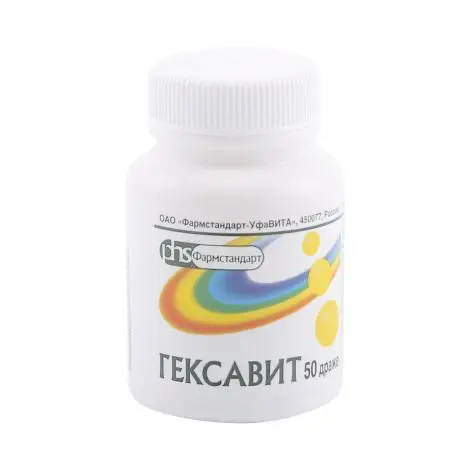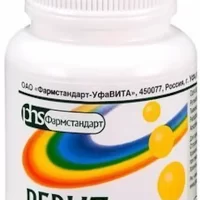Description
Ascorbic acid Pharmacodynamics
Ascorbic acid (vitamin C) is not formed in the human body and comes only with food.
Pharmacological effects: in amounts well above the daily requirement (90 mg), it has almost no effect, except for rapid elimination of symptoms of hypo- and avitaminosis (scurvy).
Physiological functions: is a cofactor of some hydroxylation and amidation reactions – transfers electrons to enzymes, providing them with a reducing equivalent. It participates in reactions of hydroxylation of proline and lysine residues of procollagen to form hydroxyproline and hydroxylysine (posttranslational modification of collagen), oxidation of lysine side chains in proteins to form hydroxytrimethyllysine (during synthesis of cartinite), oxidation of folic acid to folic acid, drug metabolism in liver microsomes and hydroxylation of dopamine to form noradrenaline.
Increases the activity of amidifying enzymes involved in the processing of oxytocin, antidiuretic hormone (ADH) and cholistokinin. Participates in steroidogenesis in the adrenal glands.
The main role in tissues is participation in synthesis of collagen, proteoglycans and other organic components of intercellular substance of teeth, bones and capillary endothelium.
Indications
Treatment of hypo- and avitaminosis C (if quick replenishment of vitamin C and impossibility of oral administration).
Used for therapeutic purposes in all clinical situations involving the need for additional administration of ascorbic acid, including: parenteral nutrition, gastrointestinal (GI) diseases (persistent diarrhea, small bowel resection, peptic ulcer, gastrectomy), Addison’s disease.
In laboratory practice: for labeling red blood cells (together with sodium chromate Cr51).
Treatment of hypo- and avitaminosis C (if quick replenishment of vitamin C and impossibility of oral administration).
Used for therapeutic purposes in all clinical situations involving the need for additional administration of ascorbic acid, including: parenteral nutrition, gastrointestinal (GI) diseases (persistent diarrhea, small bowel resection, peptic ulcer, gastrectomy), Addison’s disease.
In laboratory practice: for labeling red blood cells (together with sodium chromate Cr51).
Contraindications
Hypersensitivity to the components of the drug; in case of long-term use in high doses (more than 500 mg) – diabetes mellitus, hyperoxaluria, nephrolithiasis, hemochromatosis, thalassemia, glucose-6-phosphatehydrogenase deficiency.
With caution:
Diabetes mellitus, glucose-6-phosphatehydrogenase deficiency, hemochromatosis, sideroblast anemia, thalassemia, hyperoxaluria, renal stone disease.
Pregnancy and lactation:
Use of the drug during pregnancy and lactation is possible only by doctor’s prescription if the estimated benefit to the mother exceeds the potential risk to the fetus or infant.
Hypersensitivity to the components of the drug; in case of long-term use in high doses (more than 500 mg) – diabetes mellitus, hyperoxaluria, nephrolithiasis, hemochromatosis, thalassemia, glucose-6-phosphatehydrogenase deficiency.
With caution:
Diabetes mellitus, glucose-6-phosphatehydrogenase deficiency, hemochromatosis, sideroblast anemia, thalassemia, hyperoxaluria, renal stone disease.
Pregnancy and lactation:
Use of the drug during pregnancy and lactation is possible only by doctor’s prescription if the estimated benefit to the mother exceeds the potential risk to the fetus or infant.
Dosage and administration method
- Intramuscularly, intravenously (slowly).
- In adults, 100 to 500 mg (2 to 10 ml 50 mg/ml solution) a day, in therapy of scurvy – up to 1000 mg a day.
- In children, 100 to 300 mg (2 to 6 ml 50 mg/ml solution) a day, in therapy of scurvy – up to 500 mg (10 ml 50 mg/ml solution) a day.
- For erythrocyte labeling (together with sodium chromate Cr51) – 100 mg of ascorbic acid is injected into a bottle with sodium chromate Cr51.





